We all instinctively know that spending time in nature replenishes us but we never really think about why. When we need a break from the stress and tedium of our lives, we walk through the woods, listen to a river, or stroll next to the ocean. Somehow it both soothes us and stimulates us in a way that our modern society just can’t provide. We also feel a deep desire to be near animals, to watch them, and to interact with them. The reason is simple. We spent millions of years evolving into creatures who interacted with nature, with animals and plants, using our minds and our senses to survive. Then suddenly (geologically speaking) we took it all away. We constructed a self-imposed barrier between the natural world and ourselves. We call it civilization.
The reason wildlife tours have become so popular is that they allow us a taste of that satisfaction that can only be reached by using the part of our brain that now lies dormant, to study and interact with the incredible array of living things around us. It helps us remember what we were born to do. But a driving tour can only partially scratch that itch. We’re still surrounded by a noisy machine. We don’t have the ability to touch, taste, hear, and smell the world around us, or to carefully examine the tracks in the soil that our big brains evolved to decipher. So once you’ve had that taste, and felt the amazing sensation a wildlife safari drive can give you, it’s time to go one step further, and take a wildlife walking safari.
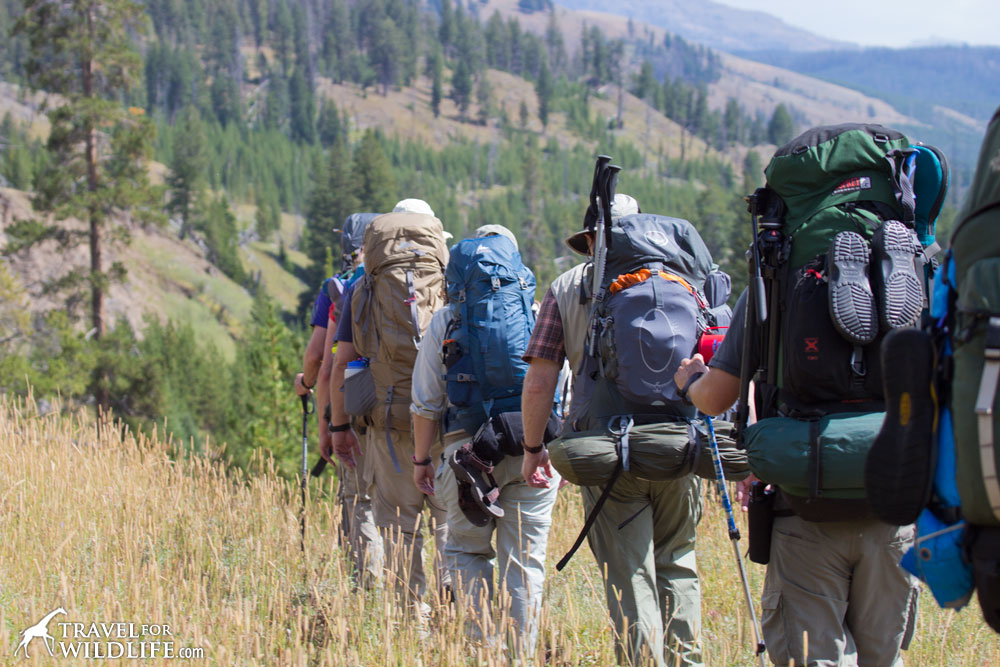
What is the difference between a driving wildlife tour and a wildlife walk?
When you embark on a standard road-based wildlife safari, you travel around a reserve or national park inside a vehicle, rarely getting out. The car is your little safety bubble from which you can watch the outside world, but there is always a barrier, both physical and psychological. On a driving tour it’s still possible to experience a level of disconnect, like watching a wildlife documentary. If a documentary gets scary you can just turn it off. If a lion approaches your vehicle, you can simply roll up the window.
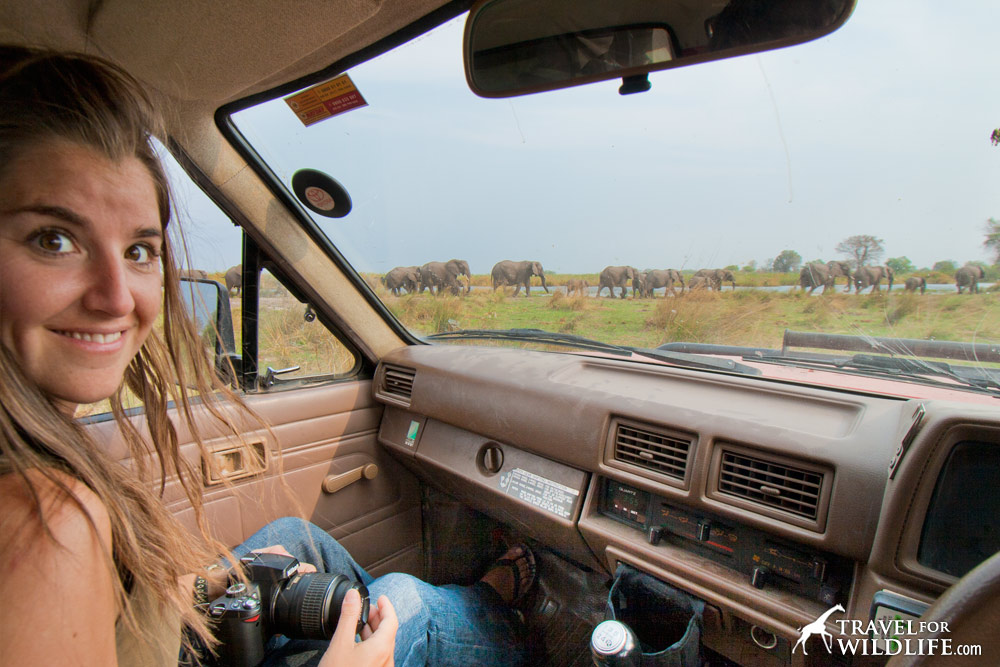
On a driving tour, it feels like it is US and THEM, two separate entities, as if we were spectators on another world. When you step out of the car, and join a wildlife walking tour, you realize that there is no line. It is only US.
A wildlife walking safari allows you to learn about the little things, to experience a level of detail that can never be appreciated from a vehicle. You’ll discover that this plant is prickly and that one smells like sage when you brush against it. You’ll discover that the tiny scritchy-scratchy sounds are lizards hunting in the undergrowth, and that the thick fibrous contents of this poop prove it was left by a browser and not a grazer. The snap of a branch, the chill in the air, the smell of the forest, the sight of a bird, the call of a predator. Your senses become heightened because they are doing what they were meant to do. At that moment you are no longer a visitor but a part of the ecosystem.
Walking around wildlife really puts everything into perspective. You will never forget the primal chill that runs down the back of your neck the first time a large predator looks your way. It is the first time you feel your place in the food chain. It is the moment you truly realize that you are a part of something much older, grander, and bigger than yourself. You are a member of the vast and ancient family of Life on Earth.
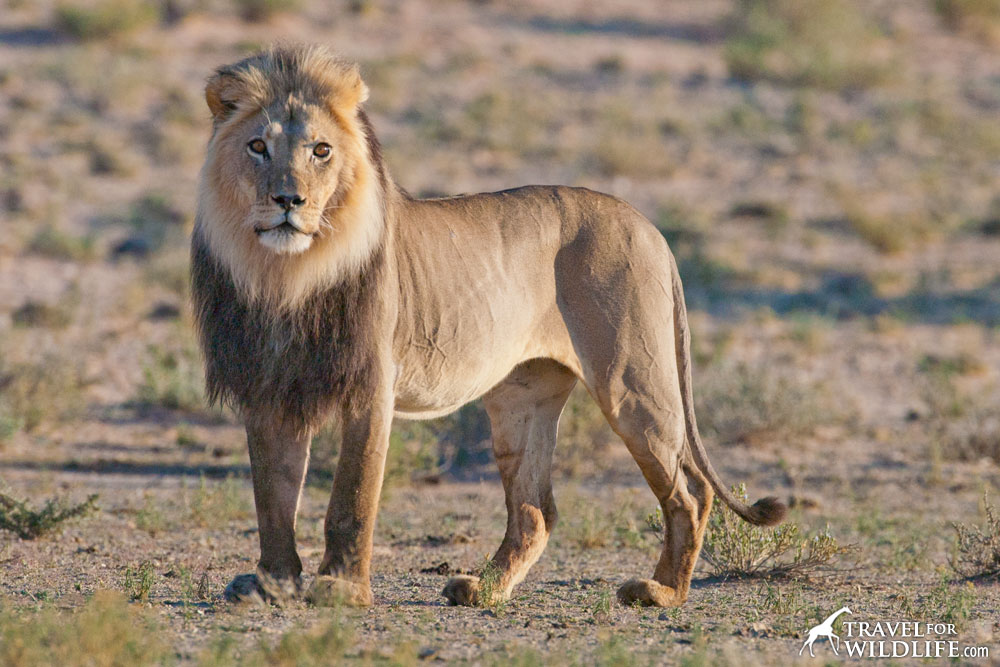
*Post sponsored by Exodus Travels*
Choosing a Wildlife Walking Tour
There are several companies who offer specialized wildlife walking tours, but the best way to choose one is to do some research on their ethical tourism policies. If they don’t show a high level of respect for the environment, for wildlife, for their workers, and for the communities they visit, then keep looking. One company that excels in responsible tourism practices is Exodus Travels. Their code of wildlife ethics sets a great example to follow. For example, if there are too many vehicles or people around a wildlife sighting, they will leave the area so the animals can have some space, peace, and quiet. The wildlife you are traveling to see should always come first. Hal and I always leave an animal alone if there are too many people around or if the animal shows signs that we are stressing it.
Also make sure you know the amount of walking involved in each tour. Choose a tour that matches your physical abilities, for your sake and for everybody else in the tour. You don’t want to injure yourself or slow everybody down.
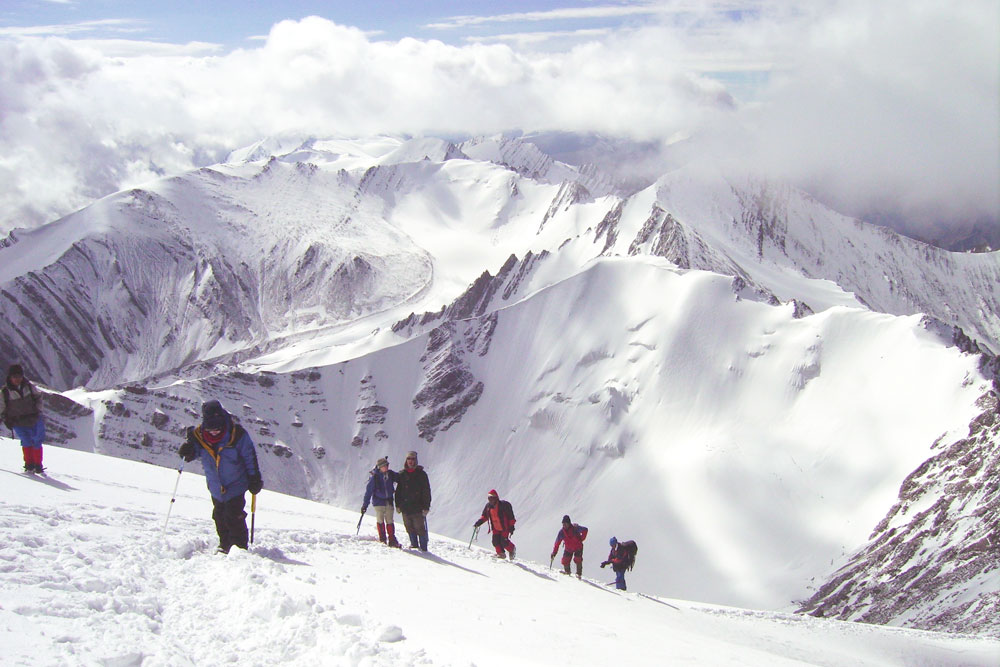
Bear in mind that some of these tours will require you to camp for several nights. Folks who just want a comfy bed, air conditioning, and a hot bath may wish to avoid these. Some wildlife walking tours will be spent in total luxury while some will be more rustic. Be careful to choose the kind that suits your tastes.
Wildlife walking safaris are safe when you choose the right guide. Choose a tour that uses knowledgeable, experienced, and local guides.
I would personally choose a company that offers several different tours you might like to take, because repeat customers tend to receive a special discount. For example, Exodus Travels offers eight different wildlife walking tours, from exploring wildlife in Madagascar to trekking and searching for snow leopards in India. I’m pretty sure that once you’ve taken one tour you’ll want to do the next!
My Love For Wildlife Walks
We’ve had a lot of great wildlife encounters over the years, but our most memorable experiences have occurred on foot. Hal and I have had the privilege of joining walking safaris in many places around the world. During our overland African trip, we went on a Botswana safari where we walked and camped in the Okavango Delta and learned about little creepy-crawlies in the Kalahari Desert in South Africa. We’ve also had some amazing grizzly bear encounters in Canada, and we’ve even been walking with polar bears in Manitoba. All of these walks were led by an experienced local guide that kept us and the animals safe.
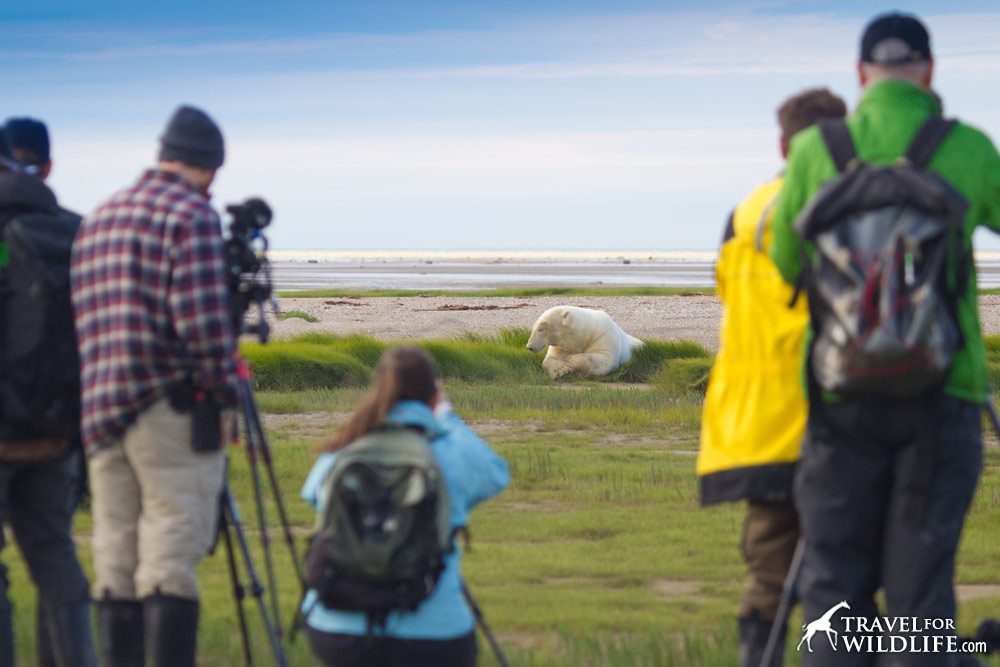
The most rewarding moment of all is when a wild animal accepts your presence and is willing to share the path with you. It makes you feel like a part of the natural system again. And it feels good to be home.
You can also take part in a walking safari that involves marine animals. For example, one of the stops during a South African safari must be a trip to De Hoop Nature Reserve, about 3h east from Cape Town. Overlooking one of the largest protected marine reserves in Africa, De Hoop is a favorite for whale watchers. One of the gems of this reserve is the WhaleTrail, a hiking trail where you hike and enjoy whale watching at the same time. Hiking the whale trail will take you about 5 days and you’ll trek for 34 miles. Between June and December, the area becomes an important southern right whale nursery. As you hike along the Whale Trail, be amazed at the sight of whales.
Here are a few examples of my favorite walking-with-wildlife experiences, and the one I would do next if I get the chance!
Hiking in the Carpathians
The first time I went on a wildlife walking safari was in Romania. But I wasn’t there on vacation, I was volunteering to work on a research project. My job would be hiking the Carpathian Mountains in search of wolves.
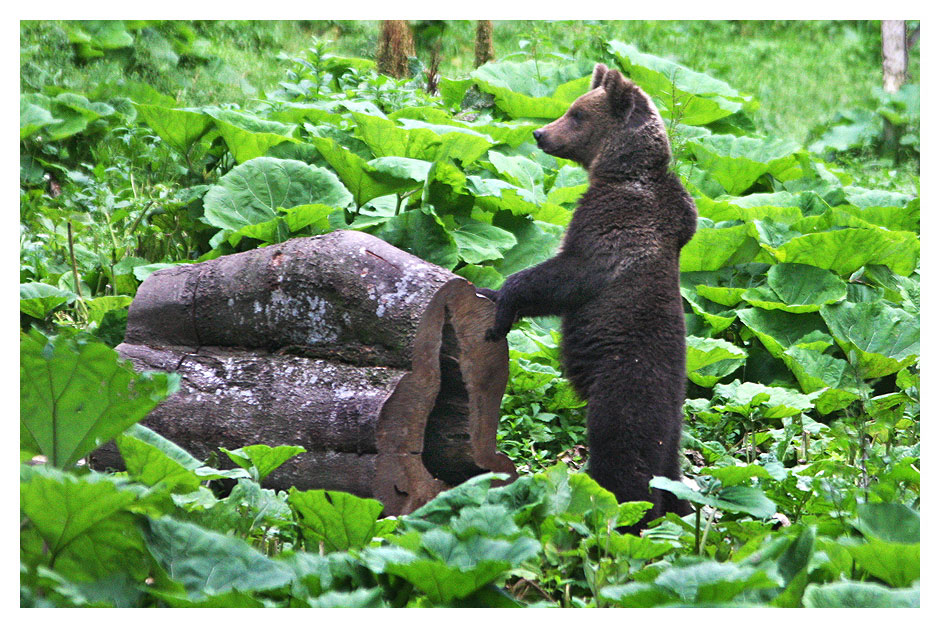
With about 6,000 brown bears in Romania, I hoped I would see at least one during my three-month stay. But no one told me I would stumble upon one during my very first day in the field!
For my first day of work, my job was to get to know the area with one of my colleagues and his two dogs (who were trained to sniff out wolf poop). We were hiking along a remote gravel road with one dog walking at our side and the other about 50 feet ahead. Suddenly, a big brown blob emerged from the bushes on the left, ran across the road directly between us and the dog in front, and then crashed into the bushes to our right. The whole thing was over in seconds. We stopped to look at each other in disbelief. The lead dog stopped walking and looked over her shoulder at us with a face that said, “I just missed something, right? What did I miss?”
And that was only the first of four encounters I would have with brown bears during my stay. It changed my perspective forever.
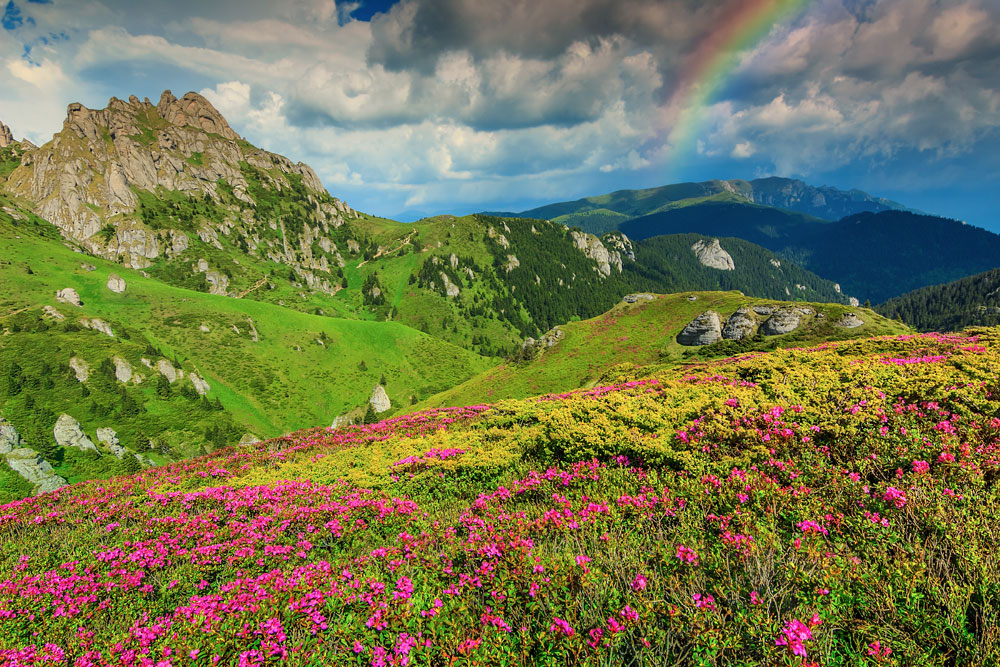
Romania is a stunning country. I have great memories of lying on a bed of beautiful wild summer flowers just outside our little wooded cabin, hiking the Carpathians by myself looking for wolves, and watching Yellow-bellied toads in the little pools that the summer rains had brought with them.
A few years after I left, the Libearty Bear Sanctuary opened nearby in our quaint rural village of Zarnesti. This is one of the reasons why I’d love to go back to Romania. This is a real sanctuary and not a tourist trap. They provide shelter and a good home for bears that have been rescued from a life of abuse. The bear sanctuary is a must for any wildlife traveler visiting Romania.

Wildlife Walks in Yellowstone
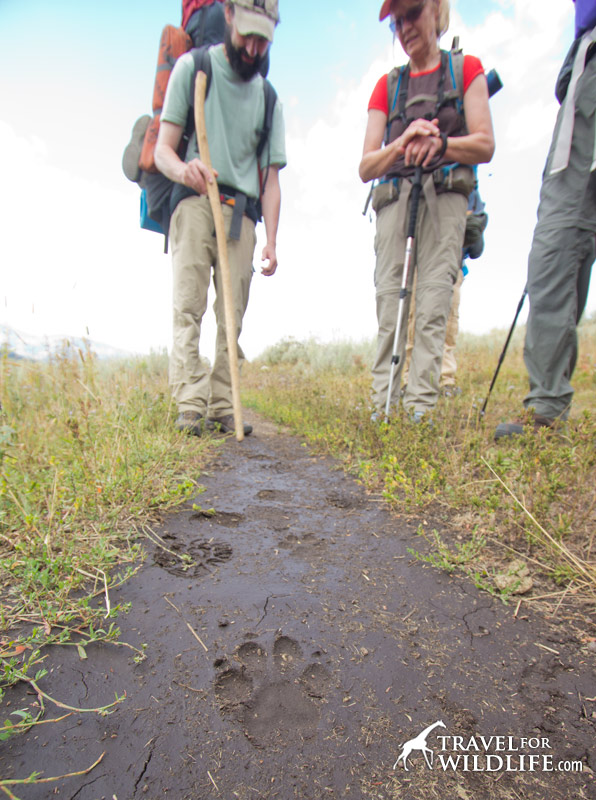
If you live in the United States, then you don’t have to go too far to find an epic wildlife safari. You don’t even have to leave the country.
Hiking in Yellowstone for a week is one of our most cherished memories. We joined a wolf biologist who took us on a trek to the most remote corner of the park, camping in some crazy wild places along the way. During our hike we saw bison walking by our campsite, a herd of elk, a moose hiding in the bushes, and mountain goats on the mountain tops. We also found several carcasses, and bear and wolf tracks and poop. We drank the same water that wolves drink and watched the same sunsets that grizzlies watch.
If you visit Yellowstone, it is so worth taking a long distance hike. Most of the visitors don’t ever bother to leave their cars, and the crowds of tourists on the road can make enjoying the park a challenge. When you leave the car behind and hike into the wilderness, you may just find the Yellowstone you were looking for.
Searching for Snow Leopards
Every one has a list of dream animals they’d love to see in the wild. The majestic snow leopard tops my list. With less than 7,000 snow leopards in the world, seeing this endangered and elusive cat would be an incredible moment. Almost a miracle. A miracle that is turning into a reality for many travelers. How? By joining a specialized wildlife walking tour.
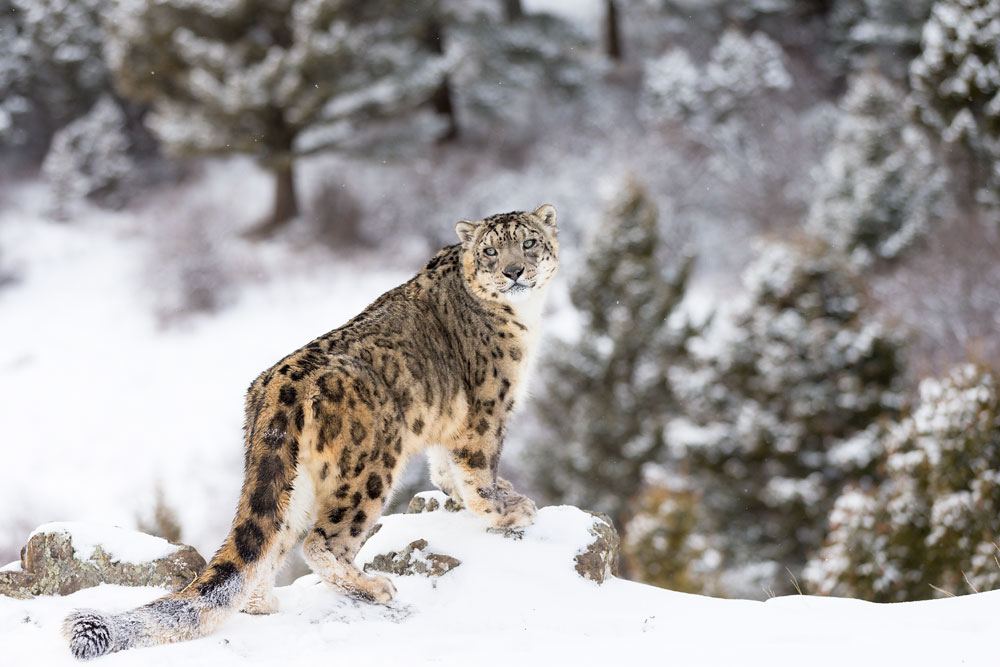
The tour guides that take visitors to search for snow leopards tend to be locals that know the area well and know the behavior of the cats and their routines. Even in India, with a population of only 200-600 snow leopards, it is possible to spot this shy predator.
This particular tour is not easy. Camping, trekking, and hiking at high altitudes in sub freezing temperatures is not recommended for beginners. The rewards are outstanding though. Just take a look at this video of one of the successful snow leopard sightings in India.
I can’t imagine a greater honor than to stand in the presence of this stunning animal. Here’s hoping!
Discover Your True Human Nature Again
If walking through your local park and watching the birds gives you an inexplicable satisfaction, then you are tapping into a part of you that longs to be fulfilled. The safe, predictable lives we’ve built have become undeniably dull. It’s time to discover our true human nature again.
For many hundreds of thousands of years we’ve been using our senses to interact with nature and the living things that fill it. We’ve used our own bodies to move through it, and our own wit to survive in it. We’ve hardly changed physically or mentally in the ten thousand year ‘blink-of-an-eye’ since civilization arose. Those instincts are still there, and wakening them with a wildlife walking tour may be one of the most deeply satisfying things you’ll ever do.

Cristina Garcia
Zoologist and wildlife photographer. She has worked in the field with jackals, wolves, cheetahs, & leopards. She serves on the Board of Directors of SEE Turtles, a non-profit sea turtle conservation organization.
Read her posts at Travel For Wildlife and see more of her work at Truly Wild, & Our Wild Yard.

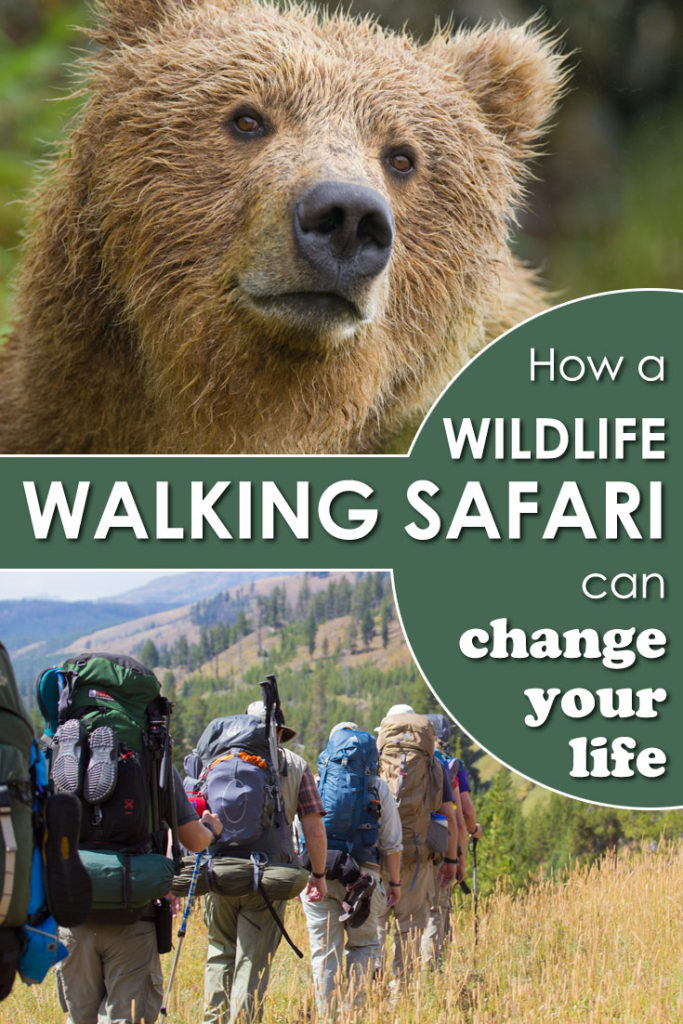
cristina garcia
Thursday 1st of September 2016
Hey Imagebloke! sorry just saw your comment. We use Canon gear, generally mid range bodies but with some good lenses. Between the two of us we carry 4 lenses: a 500mm f4, a 100-400mm zoom, an 18-55mm zoom, and a 10-22mm zoom. Plus a 1.4 teleconverter when we need extra reach. That's about it! We try to keep it as simple and light as possible! Thanks for reading! -Hal
Imagebloke
Sunday 10th of July 2016
Excellent post. I have always been curious. What is your gear? How many lenses do you carry with you?